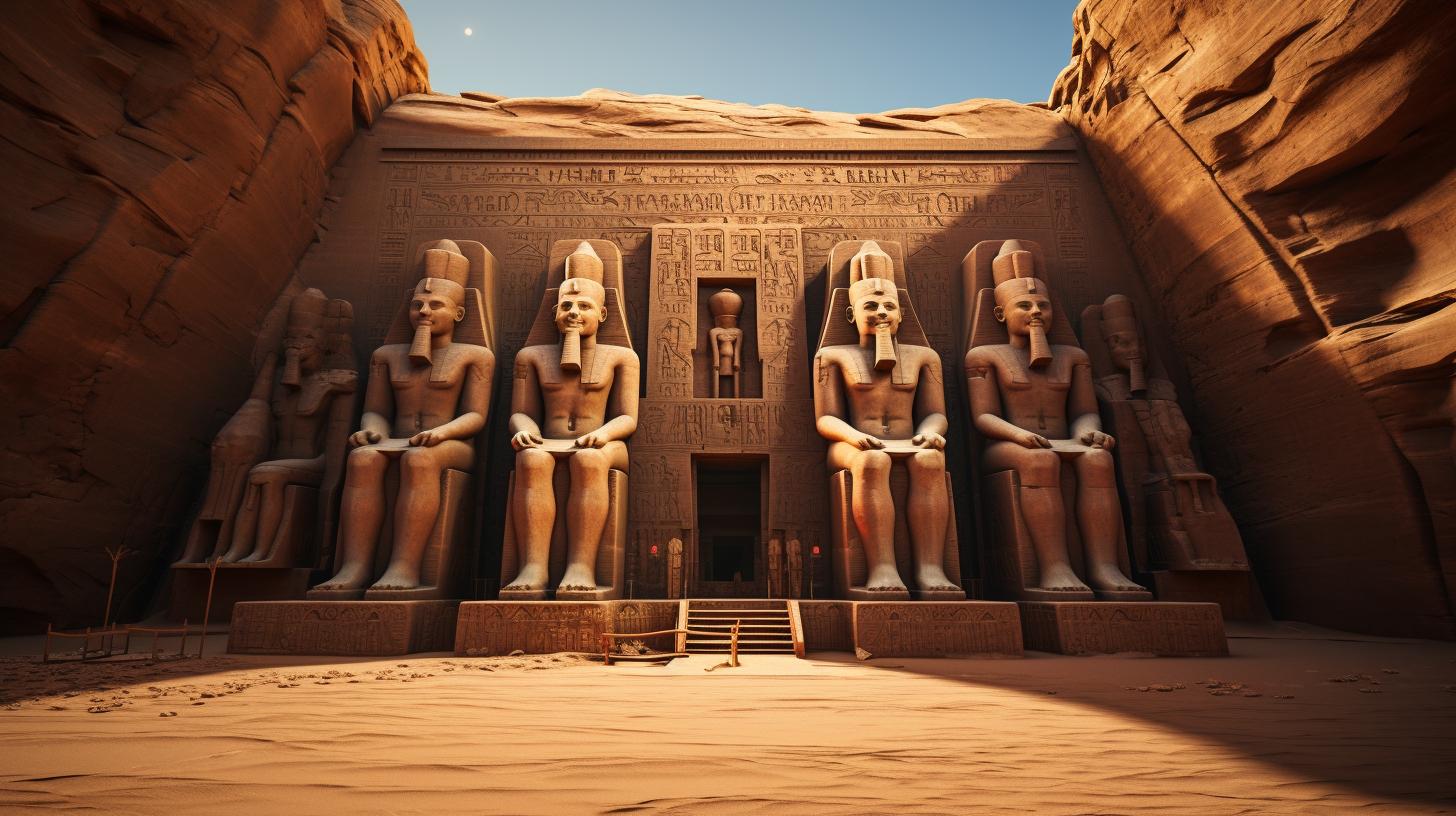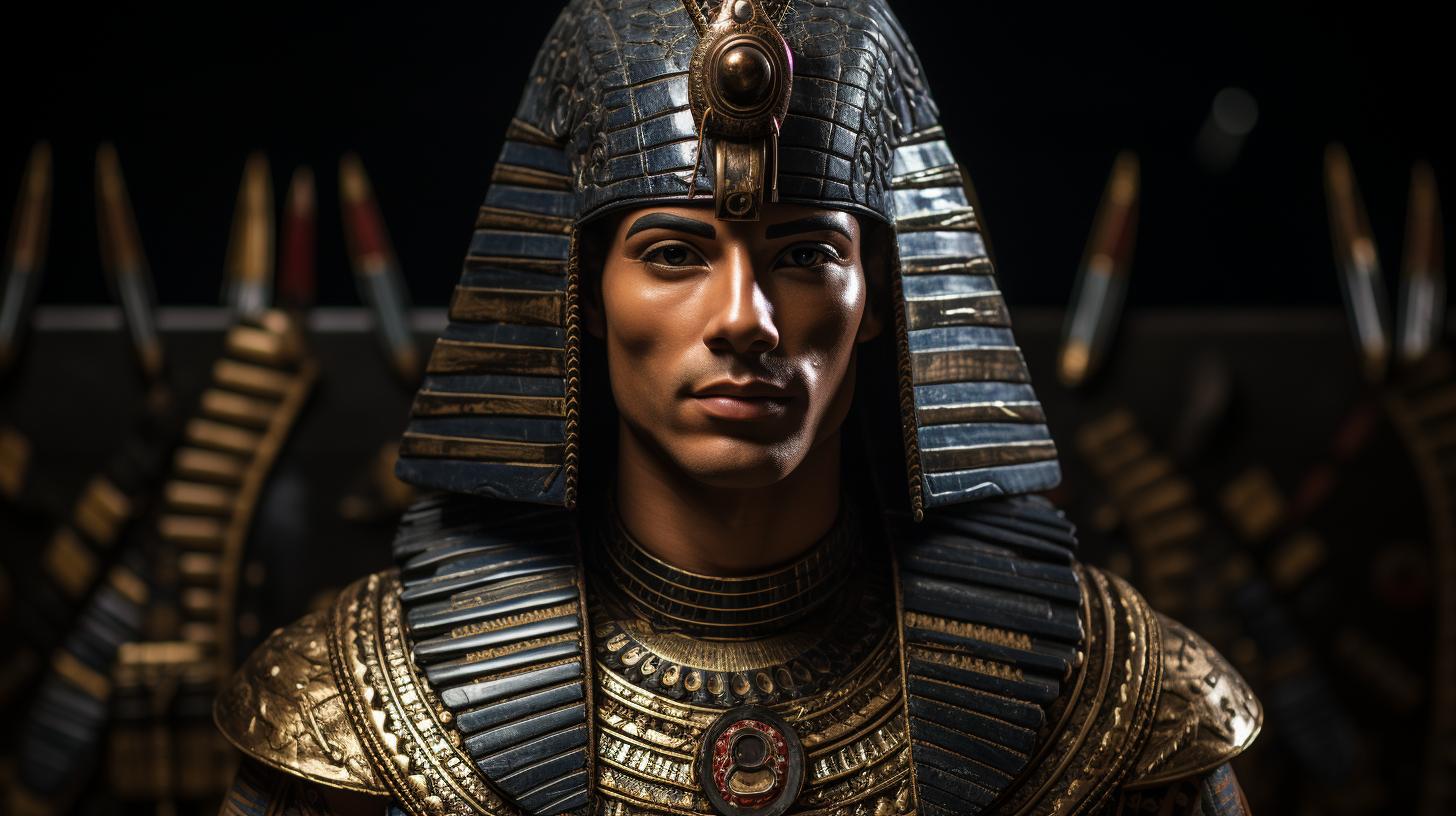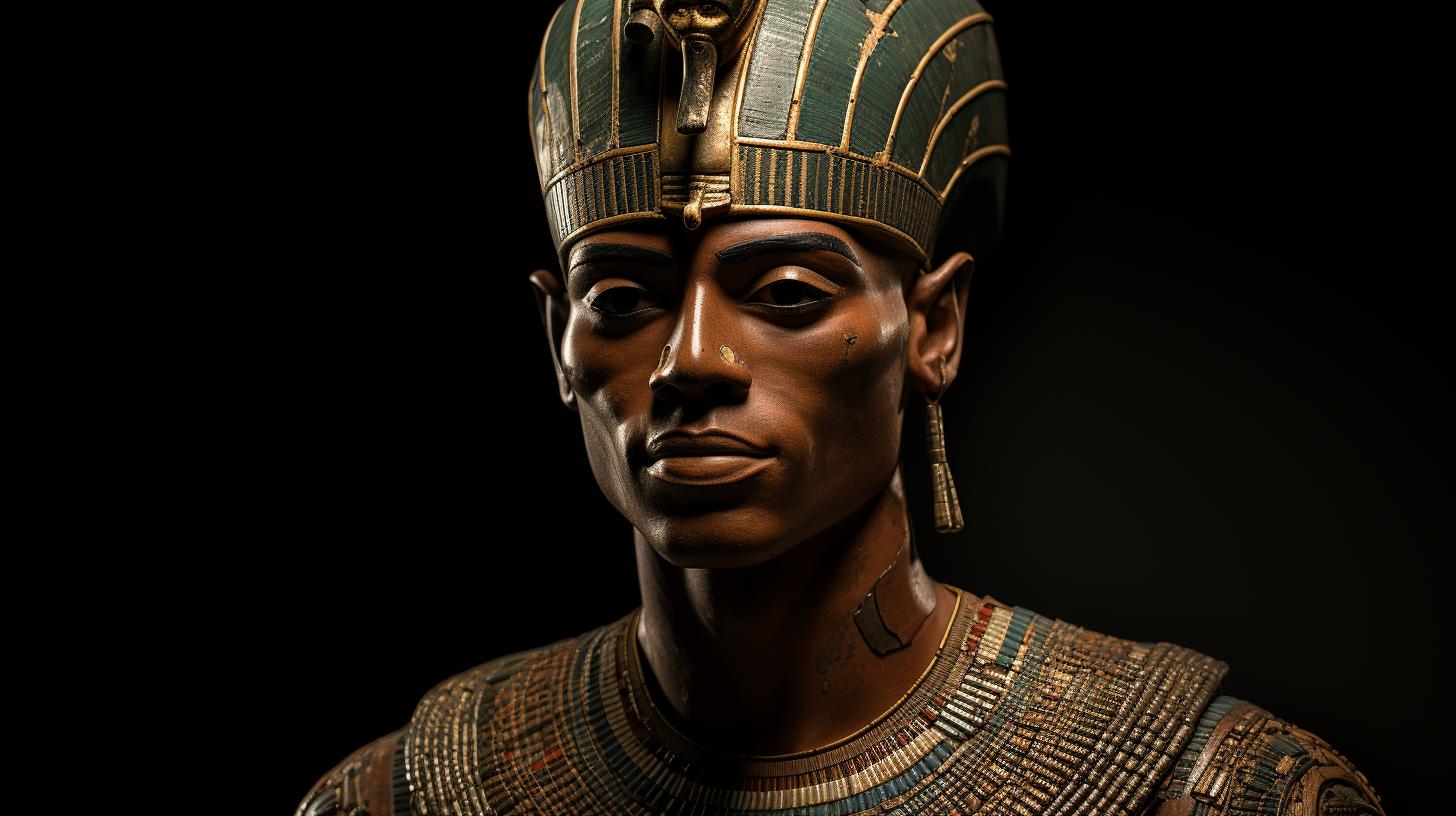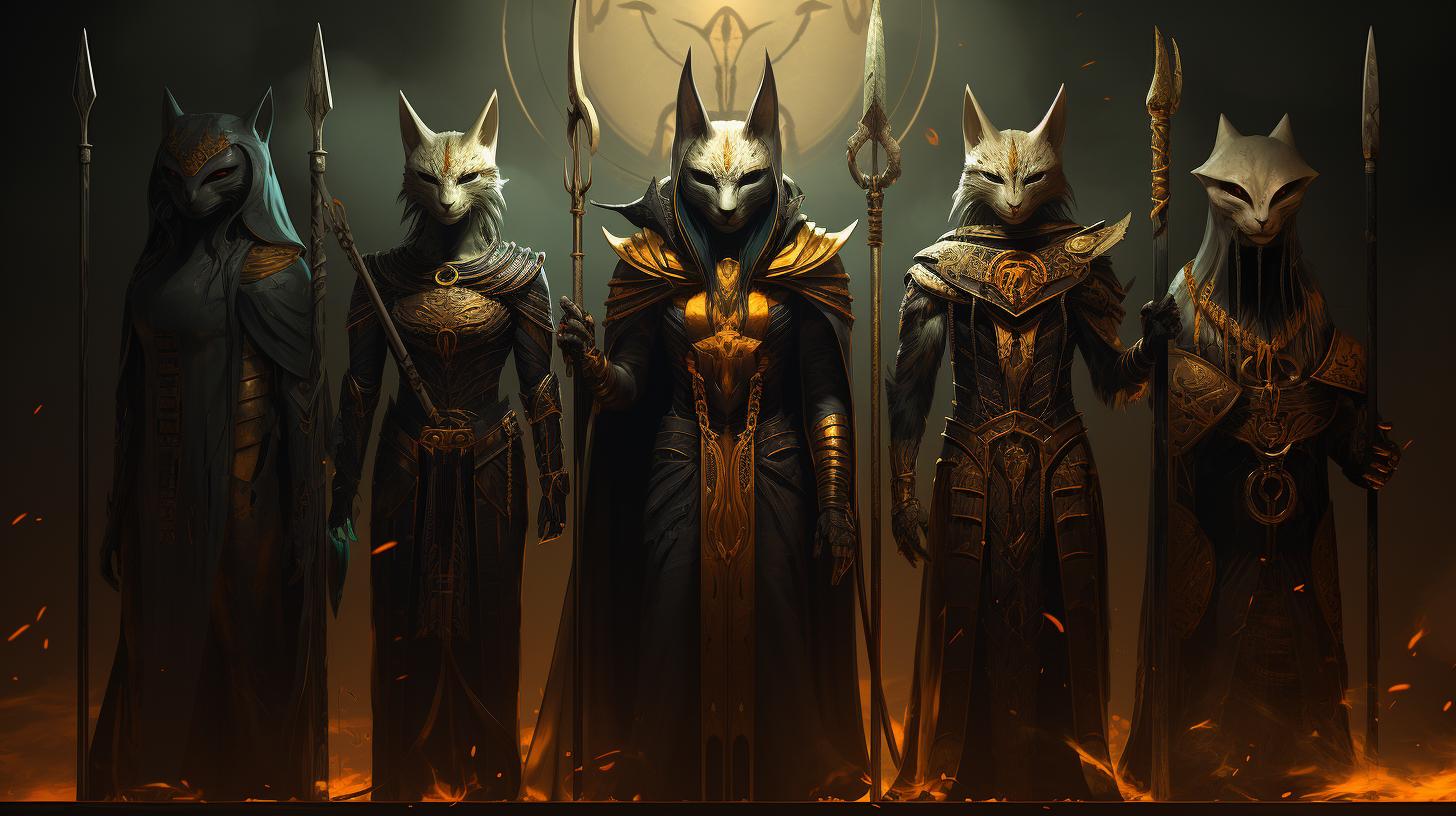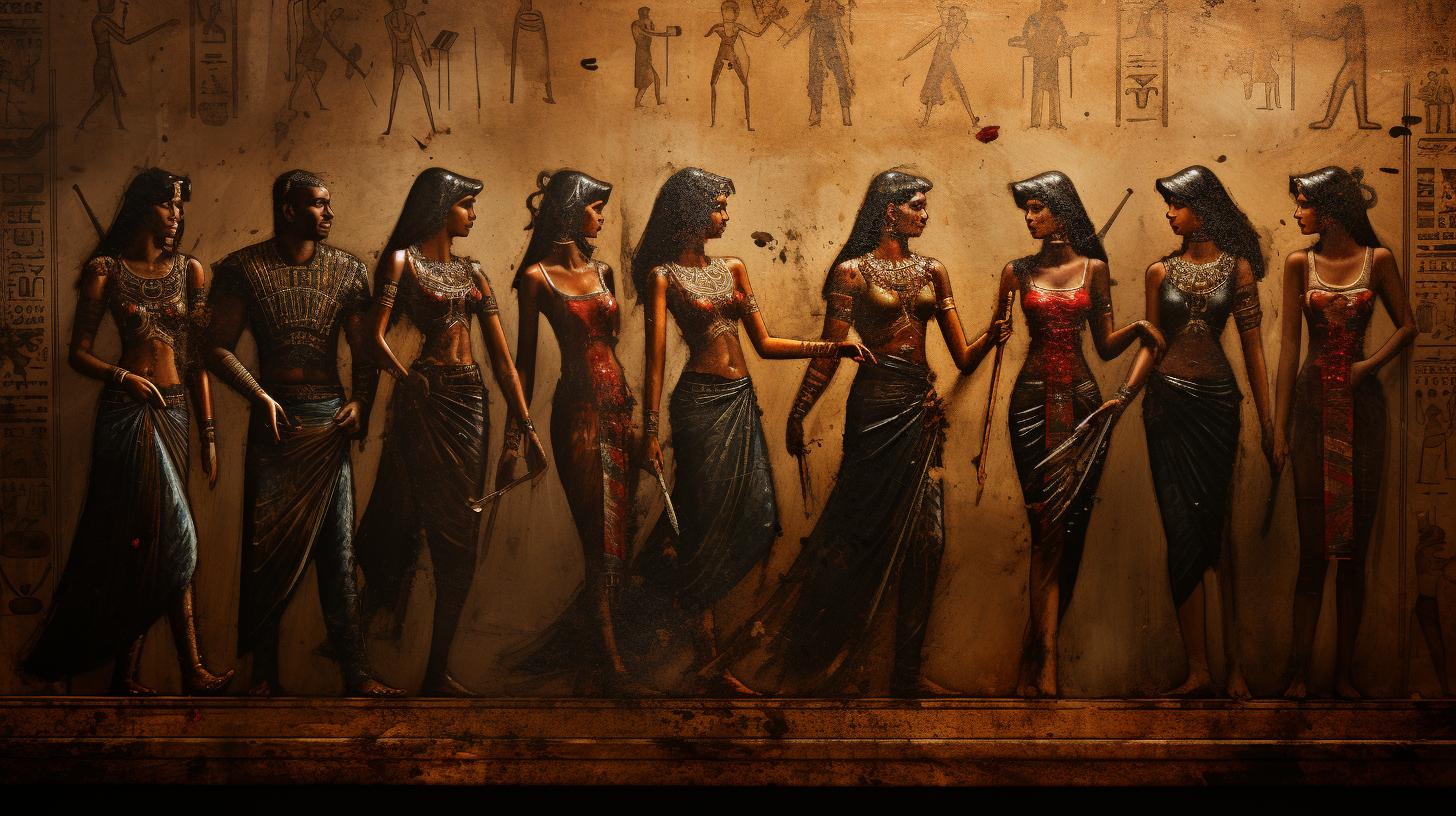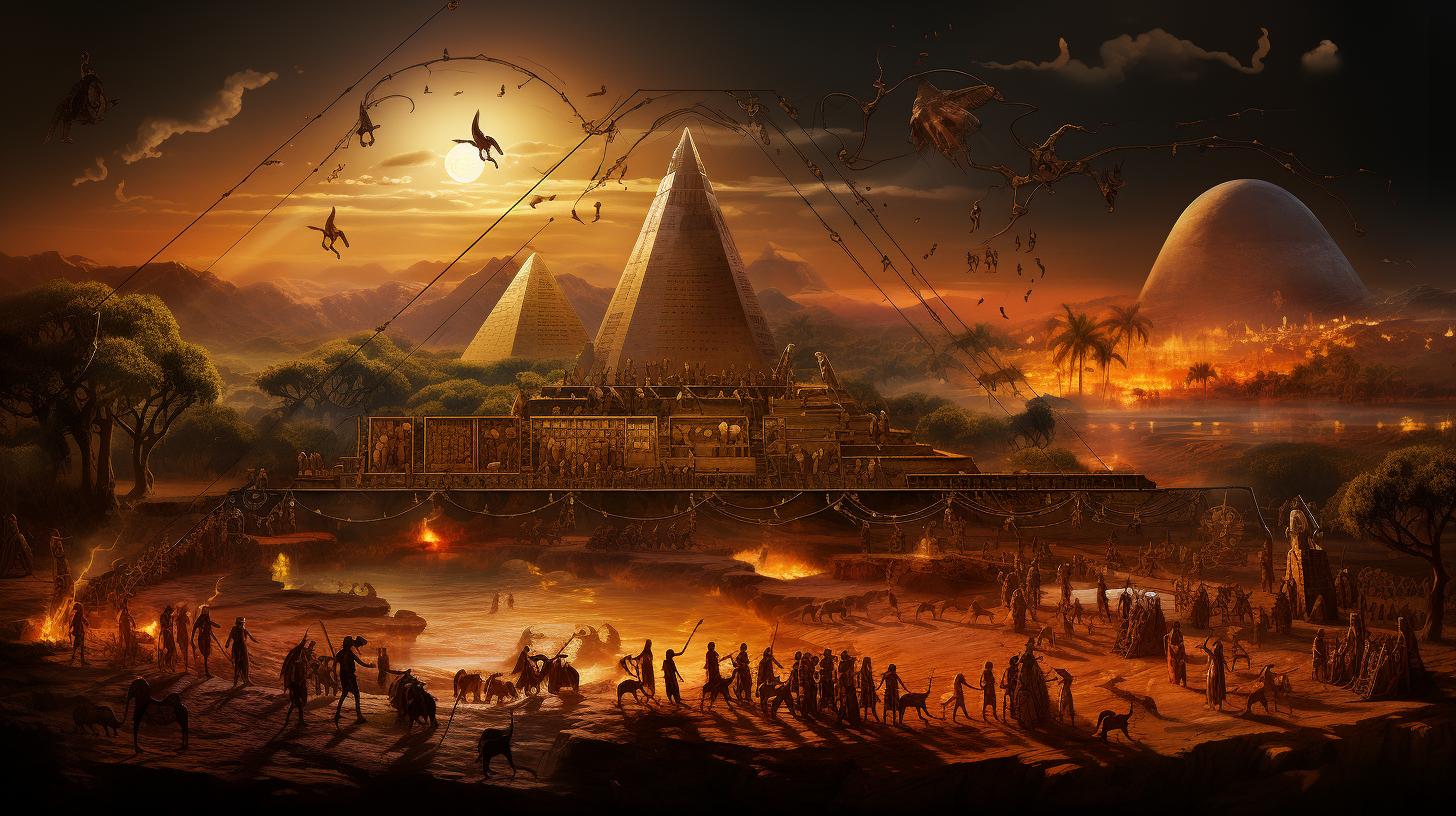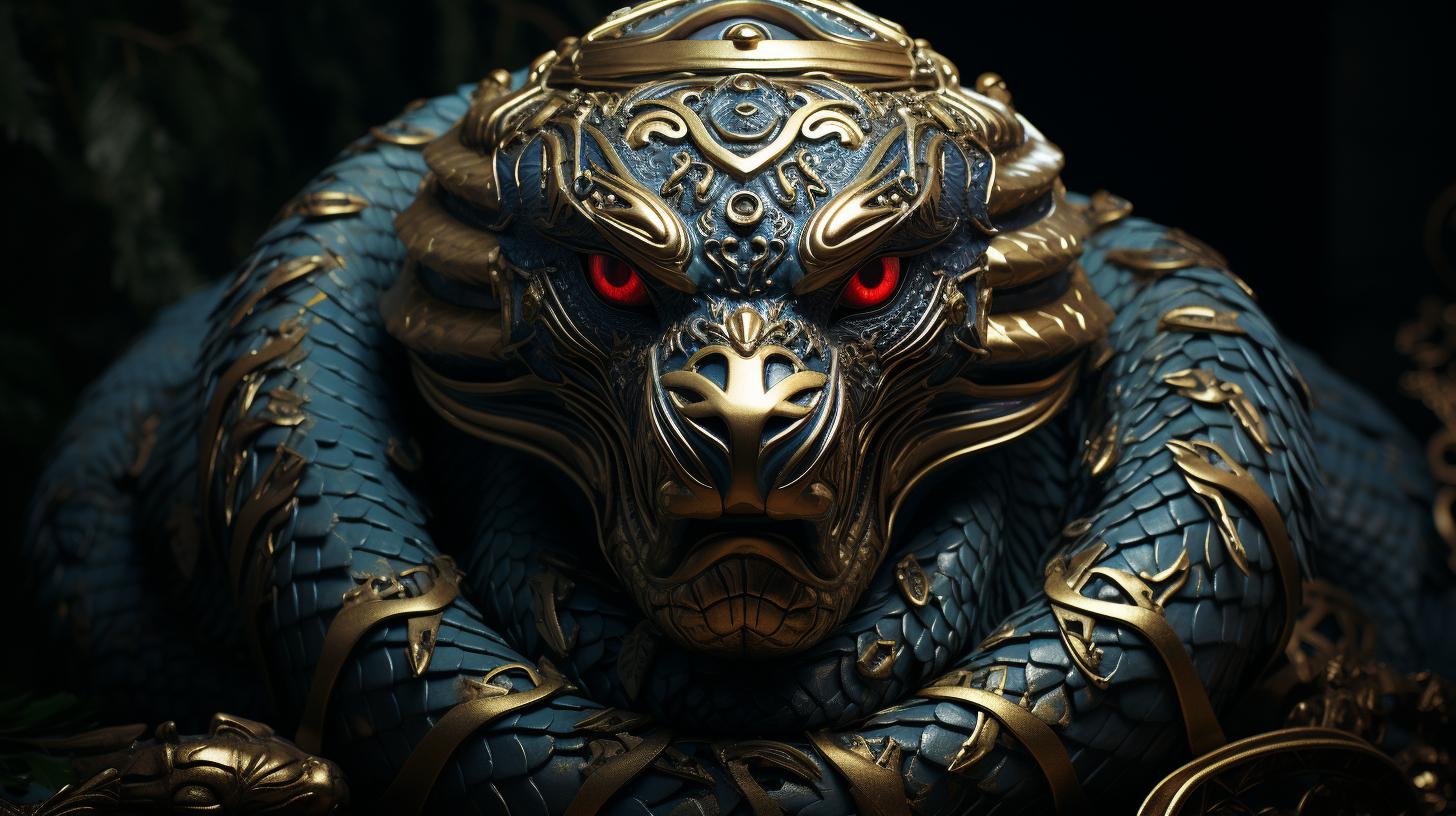The Enigmatic Journey: The Story of Sinuhe the Egyptian Unveiled

The story of Sinuhe the Egyptian is an ancient narrative that provides insights into ancient Egyptian culture and writing techniques of the Middle Kingdom era. Sinuhe, an Egyptian messenger, flees Egypt and joins a Bedouin tribe in Syria, where he starts a new life.
After many experiences and battles, he yearns to return to Egypt and receives forgiveness from King Senusret I. This tale highlights cultural differences, loyalty, and the desire for identity. Scholars continue to analyze the story, making it a fascinating part of ancient Egyptian literature.
Background of Ancient Egypt
The ancient civilization of Egypt has left an indelible mark on history with its rich cultural heritage and monumental achievements. From the towering pyramids of Giza to the mysterious hieroglyphs adorning temple walls, ancient Egypt continues to captivate the imagination of people around the world.
In this section, we will explore the influence of ancient Egypt in history, delve into the Middle Kingdom era, and provide an overview of the literature from that time.
The Influence of Ancient Egypt in History
Ancient Egypt has had a profound impact on various aspects of human history.
Its advancements in architecture, engineering, art, and governance set a precedent for future civilizations. The pyramids, for example, stand as marvels of engineering and reflect the religious beliefs and social structure of ancient Egyptians.
The development of hieroglyphic writing allowed for the preservation of historical records, literature, and religious texts. Moreover, Egypt’s centralized administration and advanced irrigation system contributed to its stability and financial prosperity.
The Middle Kingdom Era in Egypt
The Middle Kingdom era in ancient Egypt, spanning from approximately 2000 BCE to 1700 BCE, marked a significant period of stability, cultural development, and territorial expansion. It witnessed the rise of powerful pharaohs and the flourishing of arts and literature.
The pharaohs of the Middle Kingdom focused on restoring order, strengthening the economy, and initiating projects to benefit the people. This era also saw extensive trade and diplomatic relations with neighboring regions, such as Nubia, the Levant, and the Near East.
Overview of Ancient Egyptian Literature
Ancient Egyptian literature provides a unique window into the beliefs, values, and daily life of its people. From religious hymns and prayers to myths and historical accounts, the literature of ancient Egypt offers a diverse range of genres.
Written primarily in hieroglyphs and hieratic script, these texts provide insights into the spiritual beliefs, societal norms, and political events of the time. The Tale of Sinuhe, considered one of the finest surviving works of literature from ancient Egypt, showcases the narrative skills and writing techniques employed during the Middle Kingdom era.
Introduction to the Story of Sinuhe
The story of Sinuhe, an ancient Egyptian narrative, offers a fascinating glimpse into the cultural and historical landscape of the Middle Kingdom era. In this section, we will explore an overview of ‘The Tale of Sinuhe’ and delve into the context and significance of this captivating story.
Overview of ‘The Tale of Sinuhe’
‘The Tale of Sinuhe’ is a compelling narrative that follows the journey of Sinuhe, an Egyptian messenger, as he embarks on an unexpected path. The story takes us on a remarkable adventure through Egypt, the Near East, and beyond, offering valuable insights into the complexities of ancient Egyptian society and the individual experiences of its people.
Context and Significance of the Story
This ancient tale holds great importance in our understanding of the Middle Kingdom era in Egypt. It sheds light on the cultural differences between Egypt and the Near East, providing a window into the diplomatic, social, and political dynamics of the time.
The story also serves as a testament to the remarkable writing techniques and literary structure prevalent during this period, showcasing the skills and creativity of ancient Egyptian scribes.
Furthermore, ‘The Tale of Sinuhe’ sparks debates among scholars regarding the historicity of its central character and the authenticity of the locations and leaders depicted in the story.
It continues to be studied and analyzed as one of the finest surviving works of ancient Egyptian literature, contributing to our knowledge of this fascinating civilization.
Sinuhe: The Egyptian Messenger
As a trusted figure in Egypt’s royal court, Sinuhe held a significant role serving as a messenger and assistant to the king, Amenhotep I. His responsibilities included relaying important messages, coordinating diplomatic efforts, and ensuring smooth communication between the king and his subjects.
Sinuhe’s position granted him access to the intricacies of Egyptian politics, power dynamics, and courtly intrigue.
Sinuhe’s Escape from Egypt
However, the sudden death of Amenhotep I during an expedition in the east shook Sinuhe to his core. Fearing the uncertain circumstances surrounding the king’s demise, Sinuhe made a hasty decision to flee Egypt, embarking on a perilous journey that would redefine his life’s path.
His escape from his homeland was characterized by intrigue, secrecy, and a desperate bid to safeguard his own future.
Joining the Bedouin Tribe and New Life in Syria
During his journey, Sinuhe found himself joining a Bedouin tribe in the east, near the region of Syria. This newfound alliance offered him refuge, protection, and a chance to start afresh.
Sinuhe adopted their customs and gradually assimilated into their way of life, forging relationships with the tribe’s members and adapting to their nomadic lifestyle. He embraced the challenges of living in a foreign land, learning their language, and navigating the complexities of a different culture.
The Bedouin tribe provided Sinuhe with a sense of belonging and stability, as he honed his skills, demonstrated his leadership capabilities, and built a reputation among his new companions. This period of his life represented a transformative chapter, where his identity as an Egyptian messenger intertwines with his evolving role within the Bedouin community.
Through his experiences with the Bedouin tribe and his acceptance within their fold, Sinuhe embarked on a unique personal and cultural journey that would shape his perceptions, values, and understanding of the world beyond the borders of Egypt.
- Integration into the Bedouin community
- Adoption of their customs and language
- Learning to navigate the challenges of a different culture
- Development of leadership skills and reputation
The story of Sinuhe, as he embeds himself into the fabric of the Bedouin tribe while remaining connected to his Egyptian origins, delves into themes of adaptation, cultural exchange, and the resilience of identity.
Sinuhe’s Journey and Experiences
Embarking on his journey away from Egypt, Sinuhe’s life takes an unexpected turn as he integrates into an Asian tribe. This new chapter brings him face to face with a unique culture and diverse challenges.
Life and Leadership Among the Asian Tribe
Amidst the foreign landscape, Sinuhe adapts and embraces his newfound role as a leader among the Asian tribe. He must navigate the intricacies of their customs, traditions, and social hierarchy while establishing his own reputation.
Completing Tasks and Facing Challenges
Sinuhe encounters various trials and tribulations as he fulfills the duties assigned by the tribe’s leader. From engaging in battles to accomplishing perilous missions, Sinuhe proves his mettle and earns the respect of his companions.
Fatherhood and Settling into a New Culture
Throughout his time with the Asian tribe, Sinuhe experiences the joys and responsibilities of fatherhood. Raising his children in a foreign land forces him to reconcile his Egyptian roots with the customs and values of his adopted community.
As Sinuhe forges ahead on his journey, he grapples with his evolving identity, loyalty, and the bonds he forms with his new family. These experiences shape him, bringing insights into the fluid nature of cultural adaptation and the resilience of the human spirit.
Sinuhe’s Longing for Egypt and Return
Sinuhe’s journey in exile led him to reflect upon his life and contemplate a decision that would shape his future. In this section, we delve into his reflections, the pivotal duel he faced, and his eventual reunion with King Senusret I, marking his return to Egypt.
Reflections on Life and Decision to Return
Far away from Egypt, Sinuhe found himself grappling with a sense of longing for his homeland. He pondered the dichotomy between the freedom he had found among the Bedouin tribe and the deep-rooted connection he felt towards his Egyptian heritage.
These reflections stirred a strong desire within Sinuhe to return to his motherland and the life he had left behind.
Sinuhe’s Duel and Victory
Upon his decision to return, Sinuhe’s determination was put to the test in a climactic duel against a warrior sent to assassinate him. With fierce determination, Sinuhe faced his opponent in a battle that would determine his fate.
Against all odds, he emerged victorious, affirming his resolve to reclaim his rightful place in Egypt.
Reunion with King Senusret I and Return to Egypt
News of Sinuhe’s triumphant duel reached King Senusret I, who recognized the indomitable spirit of his courtier. In a surprising turn of events, the king extended an invitation of forgiveness and reconciliation to Sinuhe, urging him to return to Egypt.
Sinuhe embraced this opportunity, bidding farewell to his wife, children, and the life he had built among the Bedouin tribe. With anticipation and a mix of emotions, he embarked on his journey back to Egypt, ready to reunite with a changed but still familiar land.
Cultural Insights and Historical Context
Cultural Insights and Historical Context provide a deeper understanding of the cultural differences between Ancient Egypt and the Near East, the writing techniques and literary structure used during the Middle Kingdom, as well as the debatable historicity of Sinuhe and criticisms surrounding his story.
Cultural Differences Between Egypt and the Near East
The story of Sinuhe offers valuable insights into the contrasting cultural practices and customs between Ancient Egypt and the Near East. It showcases the variations in belief systems, social structures, and daily life between these two regions.
By examining the experiences and interactions of Sinuhe in the Asian tribe, we gain a broader understanding of the cultural divide and the ways in which they shaped the protagonist’s journey.
Writing Techniques and Literary Structure in the Middle Kingdom
The Tale of Sinuhe serves as a testament to the sophisticated writing techniques and literary structure employed during the Middle Kingdom era in Ancient Egypt. Hieratic script, a cursive form of hieroglyphs, was utilized to compose this narrative, showcasing the adaptability and versatility of Egyptian writing systems.
Additionally, the preservation and replication of Sinuhe’s story through papyri scrolls highlight the significance of this literary work in educational settings and the transmission of cultural knowledge.
Debatable Historicity of Sinuhe and Criticisms
Despite being a revered piece of literature, the historicity of Sinuhe, the central character in the story, remains subject to debate among scholars.
The story was designed as an autobiographical narrative, but the inscriptions on Sinuhe’s tomb were replicated. While the locations and leaders described in the story hold historical authenticity, the accuracy of specific events and personal details is uncertain.
Critics question the reliability and embellishments in the narrative, urging for a nuanced understanding of historical accounts versus literary inventions.
Sinuhe’s Legacy and Impact
Sinuhe’s story, known as ‘The Tale of Sinuhe,’ holds great significance in the realm of ancient Egyptian literature and has left a lasting impact on subsequent works. This section explores the influence of Sinuhe’s tale in ancient Egyptian literature, delves into the analysis of its themes and central messages, and highlights the continuous interpretations and ongoing research surrounding this remarkable narrative.
Influence of ‘The Tale of Sinuhe’ in Ancient Egyptian Literature
‘The Tale of Sinuhe’ stands as a prominent piece within the canon of ancient Egyptian literature, serving as a notable literary model for subsequent works. Its narrative structure and portrayal of personal and military exploits influenced many tales and biographical accounts that followed.
Additionally, the story’s exploration of loyalty, identity, exile, and eventual redemption resonated with other authors, inspiring them to explore similar themes in their own writings.
Analysis of Themes and Central Messages in the Story
The story of Sinuhe encompasses various overarching themes and conveys intricate messages that captivate readers to this day.
Through Sinuhe’s journey, the narrative offers insights into the complexities of human nature, the longing for home and belonging, the clash of cultures, and the concept of personal and societal transformation.
By analyzing these themes and central messages, scholars gain a deeper understanding of ancient Egyptian society and its values.
Continuing Interpretations and Research on Sinuhe’s Tale
The tale of Sinuhe continues to pique the interest of scholars, who tirelessly explore the narrative’s meanings, historical context, and potential connections to other events and figures of ancient Egypt. Ongoing research provides additional layers of understanding, shedding further light on the societal, cultural, and religious aspects of the Middle Kingdom era.
By engaging in this continuous study, researchers enrich our knowledge and appreciation of this captivating ancient Egyptian literary masterpiece.
The captivating journey of Sinuhe in ‘The Tale of Sinuhe’ raises profound questions about loyalty and identity.
Sinuhe’s abandonment of his responsibilities in Egypt and integration into a foreign tribe forces us to consider the fluid nature of loyalty and how it shapes one’s sense of self. This exploration delves into the complexities of personal choice, cultural assimilation, and the transformative power of experiences on one’s perception of identity.
Understanding Ancient Egyptian Society through ‘The Tale of Sinuhe’
Through Sinuhe’s experiences, ‘The Tale of Sinuhe’ provides us with valuable insights into the intricacies of ancient Egyptian society. The story offers glimpses into the social hierarchy, familial structure, and religious beliefs of the Middle Kingdom era.
By analyzing Sinuhe’s interactions and challenges within different cultural contexts, we can better comprehend the values, norms, and dynamics that shaped ancient Egyptian civilization.
The Enduring Appeal and Study of Sinuhe’s Story in Modern Times
The continuing study and fascination with ‘The Tale of Sinuhe’ attest to its enduring appeal and significance in modern times.
Scholars and researchers across various disciplines examine this ancient narrative to gain a deeper understanding of literature, cultural interchange, and historical perspectives. The story’s exploration of universal themes, its rich cultural context, and the enigmatic nature of its central character make it an enduring source of inspiration and scholarship.
.












